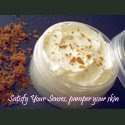
Dandelion has a long history of folk use. Early
colonists brought the herb to North America. The native
people soon recognized the value of the herb and sought
it out for its medical and nutritious benefits. The entire
plant is important as a general tonic, particularly as a
liver tonic. It may be taken as an infusion of the leaf, a
juice extraction, a root decoction, or a tincture. Fresh
leaves may be added to salads or cooked as a potherb.
The juice extracted from the stem and leaf is the most
potent part of the plant for medicinal purposes. It has
been used to eradicate warts and soothe calluses, bee
stings, or sores. Infusions of dandelion blossoms have
been used as a beautifying facial, refreshing the skin.
Dandelion is a nutritive herb rich in potassium,
calicum, and lecithin, with iron, magnesium, niacin,
phosphorus, proteins, silicon, boron, and zinc. Dandelion
provides several B vitamins along with vitamins C
and E as well as vitamin P. Chemical constituents in the
leaf include bitter glycosides, carotenoids, terpenoids,
choline, potassium salts, iron, and other minerals. The
root also has bitter glycosides, tannins, triterpenes,
sterols, volatile oil, choline, asparagin, and inulin.
Many herbalists regard the dandelion as an effective
treatment for liver disease, useful even in such extreme
cases as cirrhosis. It cleanses the bloodstream and increases
bile production, and is a good remedy for gall
bladder problems as well. The herb is also a boon to such
other internal organs as the pancreas, kidneys, stomach,
and spleen. The dried leaf, taken as a tea, is used as a
mild laxative to relieve constipation. Dandelion leaf is
also a good natural source of potassium, and will replenish
any potassium that may be lost due to the herb’s diuretic
action on the kidneys. This characteristic makes
dandelion a safe diuretic in cases of water retention due
to heart problems.The herb is useful in cases of anemia
and hepatitis, and may lower elevated blood pressure.
Dandelion may also provide relief for rheumatism and
arthritis. Dandelion therapy, consisting of therapeutic
doses of dandelion preparations taken over time, may
help reduce stiffness and increase mobility in situations
of chronic degenerative joint disease. The root, dried and
minced, can used as a coffee substitute, sometimes combined
with roasted acorns and rye.

Preparations
All parts of the dandelion have culinary and medicinal
value. It is best to harvest fresh young dandelion
leaves in the spring. The small, young leaves are less bitter,
and may be eaten uncooked in salads. Larger leaves
can be lightly steamed to reduce bitterness. Leaves gathered
in the fall are naturally less bitter. Dandelion blossoms,
traditionally used in wine making, may be gathered
throughout the flowering season. The deep, fleshy
taproot should be gathered in the fall. It takes careful
digging and loosening to extract the root intact, although
any root parts left in the soil will eventually produce another
plant. The root should be washed. Thicker roots
should be sliced down their length to facilitate drying.
The pieces should be spread out on a paper-lined tray in
a light, airy room out of direct sunlight and stored in
tightly sealed dark glass containers. Dried dandelion root
may be somewhat less potent than the fresh root.
Leaf infusion: Place 2 oz of fresh dandelion leaf, less
if dried, in a warmed glass container. Bring 2.5 cups of
fresh nonchlorinated water to the boiling point and add it
to the herbs. Cover the mixture and steep for 15–20 minutes,
then strain. Drink the infusion warm or cold throughout
the day, up to three cups per day. The prepared tea can
be kept for about two days in the refrigerator.
Tincture: Combine 4 oz of finely-cut fresh dandelion
root and leaf (or 2 oz of dry powdered herb) with 1
pt of brandy, gin, or vodka in a glass container. The alcohol
should be enough to cover the plant parts and have a
50/50 ratio of alcohol to water. Cover and store the mixture
away from light for about two weeks, shaking several
times each day. Strain and store in a tightly capped
dark glass bottle. A standard dose is 10–15 drops of the
tincture in water, up to three times a day.
Precautions
Dandelion acts as a cholagogue, which means that it
increases the flow of bile. It should not be used by persons
with closure of the biliary ducts and other biliary
ailments.
Side effects
Dandelion is a safe and nutritious herb widely used
throughout the world. No health hazards have been reported
when dandelion is used in designated therapeutic
doses. According to the PDR For Herbal Medicine, however,
some “superacid gastric complaints” could be triggered
by using the herb. Dandelion stems contain a liquid
latex substance that may be irritating to the skin of
senstitive persons.
Interactions
No interactions have been reported between dandelion
and standard medications.












0 comments:
Post a Comment